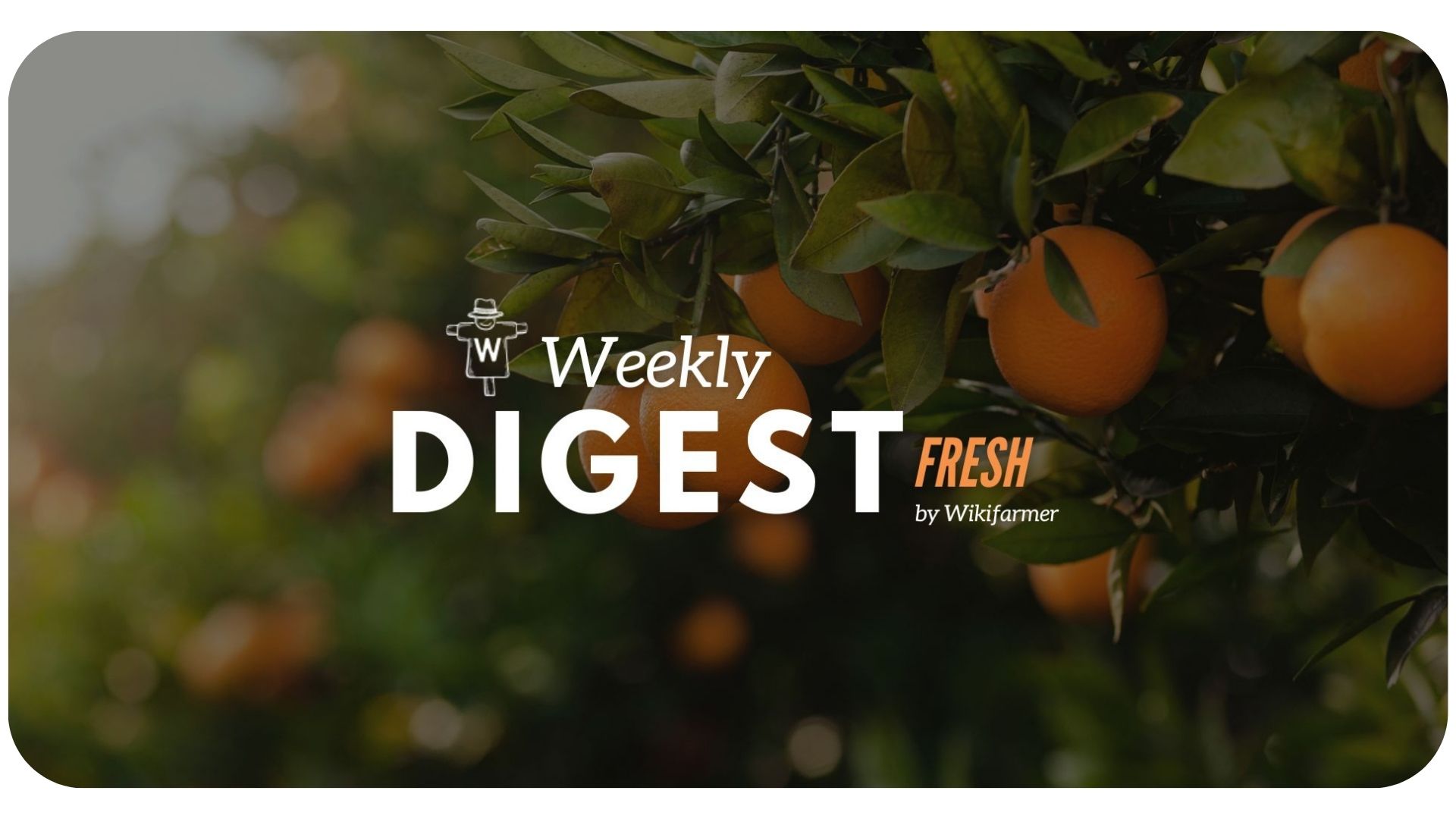Orange Market Digest w2

Weekly Orange Market Updates
Temporary Commercial Slowdown for the Navel Variety
In all the years that Wikifarmer has been active in the international citrus trade, there have been clear seasonal fluctuations in the periods immediately preceding and following the winter holiday. Several weeks before Christmas, demand for fresh fruits skyrockets. This is especially true for citrus, which are among the favorites of consumers in many parts of the world. The movement is mainly derived from consumer demand, and of course, it translates to demand from B2B players trying to satisfy it. In contrast, right after the season, demand plummets.
The previous are reflected in the next chart, which shows the month-to-month change in the number of orders for oranges during the first 10 days of the month. Taking December and January as a point of reference, we see that in the last 3 marketing years, the behavior of demand has been the same. However, the movements are becoming increasingly sharp as Wikifarmer succeeds in greatly expanding the number of businesses relying their sourcing needs on its platform.

The previous is especially true for the Navel variety of oranges, the consumers’ favorite. The slight pause in commercial transactions allows for the further weakening of pricing pressures on it across the major European players in the sector. For example, in Italy, we see a slight decrease in the prices of Navel oranges. This movement is also attributable to the expansion of alternative orange offerings, like the Sicilian Tarocco oranges, which have a significant increase in orders on our platform.
This is not to discourage producers, though, as the low temperatures observed by our agents on the field in Italy and Greece, which are expected to continue in the next few days, can help enhance the product’s appearance (in terms of its texture and color) and its quality overall, making it more easily marketable. Also, the harvesting season is far from over, with three more months ahead for naval oranges, whose season typically concludes in April.
Main Price Movements in the EU
As far as the previous developments are observed, we expected a slight drop in prices (or at least relative stability in them) among the major European players. The data from the EU-Directorate General for Agriculture and Rural Development supported this projection of ours, with the results being presented in the following plot:

Production and Trade Updates for Egypt
The Foreign Agricultural Service of the United States Department of Agriculture shared its latest annual production report for citrus fruits in Egypt. The insights drawn from this report testify to the positive outlook of Egypt becoming a source of high quality agricultural products that can be trusted to mend the sporadic supply gaps that occur in the markets of various products.
.jpg?upscale=true&width=1120&upscale=true&name=logos-top_graphics%20(12).jpg) In more detail, the country’s citrus sector shows a clear preference for the internationalization of its activity. This is evident from the fact that producers, enticed by the higher prices offered by foreign operators, have decreased the volumes they make available to the domestic market. Overall, this year they were met by a slight increase in production volumes of about 2.7% , due to the generally supportive weather conditions. The navel and Valencia varieties covered the vast majority of planted areas.
In more detail, the country’s citrus sector shows a clear preference for the internationalization of its activity. This is evident from the fact that producers, enticed by the higher prices offered by foreign operators, have decreased the volumes they make available to the domestic market. Overall, this year they were met by a slight increase in production volumes of about 2.7% , due to the generally supportive weather conditions. The navel and Valencia varieties covered the vast majority of planted areas.
.jpg?upscale=true&width=172&height=172&name=Untitled%20design%20(19).jpg)
As part of its efforts to increase transparency in agricultural supply chains, government agencies have made significant steps toward mapping plantations in a dedicated GPS, and have also set up sample testing and qualification procedures for farmers who do exports. These practices are to curb the fears of many operators not trusting imports from third countries due to negative past experiences.
As a result, Egyptian oranges are an increasingly attractive option for traders, wholesalers, and food production units in Europe and abroad; harnessing this opportunity to expand our partner’s supplier network with quality offerings, we at Wikifarmer have tried our best to increase the number of our new orange suppliers from Egypt this year by 30.77% compared to last year.
Further Expansion in Citrus International Trade
Various similar cases are observed worldwide, increasing the global interconnectivity of citrus fruit supply chains. These developments allow producers and buyers to benefit from wider potential partner networks; producers are facing an expansion of their opportunities to market their products, and buyers can source from an increasing number of sources. This is evident from the fact that South African soft citrus (tangerine/mandarine) is facing significant and increasing demand from attractive markets like of Europe, the United States, and China. The latter has taken further steps into expanding its sourcing options for citrus fruits, by also accepting lemon imports from Uruguay.
.png?width=450&height=87&name=New%20Logo%20(1).png)